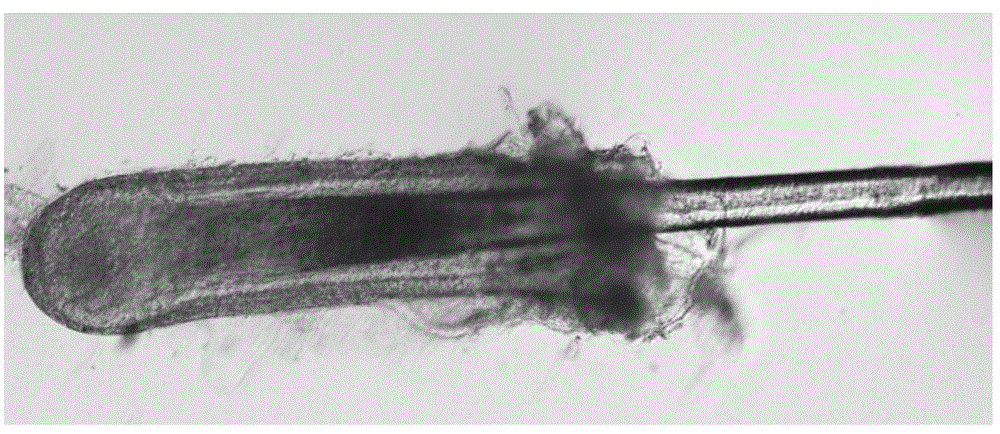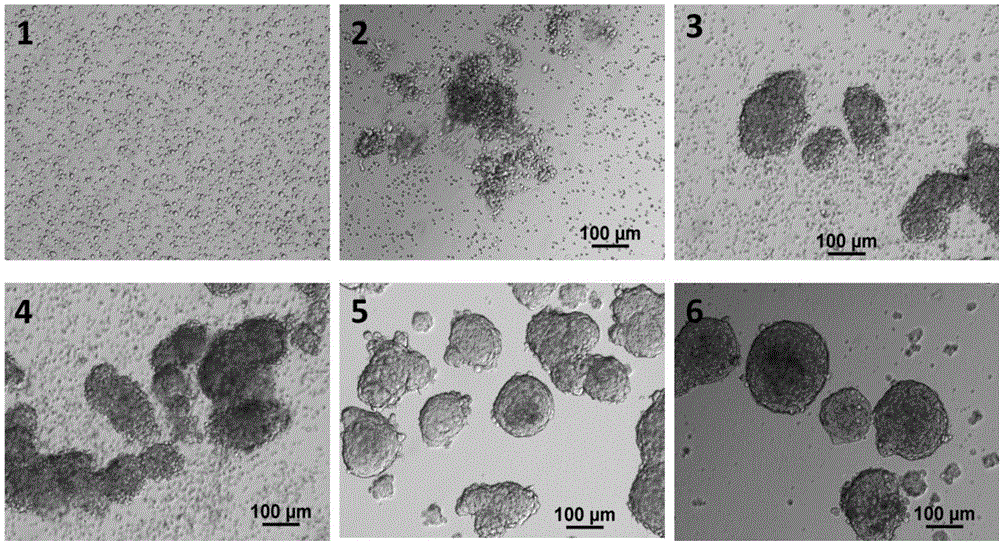Technical method of efficiently culturing down producing goat hair follicle stem cell in vitro
A hair follicle stem cell and stem cell technology, which is applied in the field of biomedical stem cells and tissue engineering, can solve problems such as hindering the in-depth development of research and lack of separation and culture methods for hair follicle stem cells, and achieves easy operation and good repeatability.
- Summary
- Abstract
- Description
- Claims
- Application Information
AI Technical Summary
Problems solved by technology
Method used
Image
Examples
Embodiment 1
[0018] 1. Isolation of cashmere goat hair follicles
[0019] Hair follicle stem cells (HFSC) were derived from the dorsal and neck skin of adult cashmere goats. Cut the back and neck skin of cashmere goats, cut off the outer hair to the root, cut into small pieces of 2 square centimeters, and remove the hair follicles from the skin with surgical tweezers, see figure 1 , washed three times in normal saline, soaked in 75% alcohol for 5 minutes, transferred to the operating solution of phosphate buffered saline (PBS, pH 7.0) + 10% fetal calf serum (FCS, Hyclone Company), in the operating solution Wash 3 times, digest with collagenase IV (Sigma) at 37°C for 10 minutes, then separate the hair follicle structure with surgical tweezers under a stereoscope, transfer it to the aforementioned operation solution, and remove the hair follicles connected with it. The sebaceous glands, arrector pili muscle, fat and other impurities were washed 3 times in fresh DMEM / F12 (Hyclone Company). ...
PUM
 Login to View More
Login to View More Abstract
Description
Claims
Application Information
 Login to View More
Login to View More - R&D
- Intellectual Property
- Life Sciences
- Materials
- Tech Scout
- Unparalleled Data Quality
- Higher Quality Content
- 60% Fewer Hallucinations
Browse by: Latest US Patents, China's latest patents, Technical Efficacy Thesaurus, Application Domain, Technology Topic, Popular Technical Reports.
© 2025 PatSnap. All rights reserved.Legal|Privacy policy|Modern Slavery Act Transparency Statement|Sitemap|About US| Contact US: help@patsnap.com



